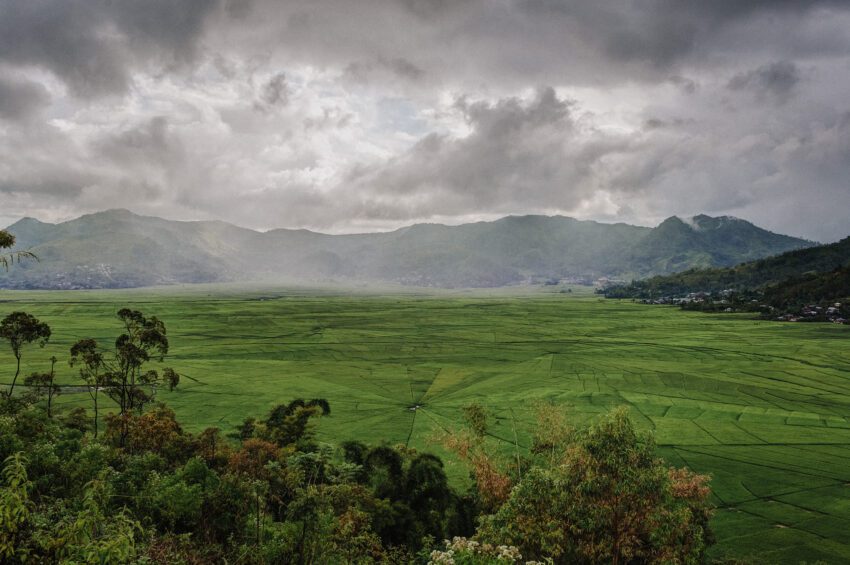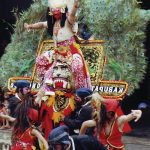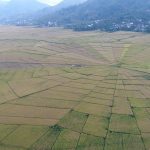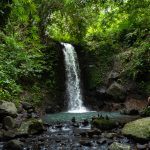Wicked Adventures frequently visits Ruteng, yet we are constantly amazed by the cultural heritage and natural wonders of this unique destination in the Flores highlands. While the traditional textiles of Ruteng are stunning, there is so much more to experience and appreciate in this area. Let us take you on a journey through the cultural riches of Ruteng beyond just textiles.
Diverse Heritage and history
Ruteng is considered the heart of the Manggarai people. While a small, but relatively modern city. Wae Rebo is very traditional village in a extinct volcanic caldera, and only reached by foot. Of course the Manggarai also divide themselves into sub-groups, while that can be confusing to visitors, they do share a common root language. The history of the Manggarai blurs into legend, but easily dates many hundreds, if not a a thousand years or more. They share the land with the nearby Liang Bua cave where the fossils of homo floresiensis were found. Commonly referred to as the Hobbits, for their short stature and other features. This extinct branch of the human evolutionary tree inhabited this same area.

Unique Ecosystem
Ruteng is located in the highlands of Flores and boasts a surprising landscape. Located at 1100 meters (3600 feet), surrounded by mountains and has slightly more rainfall than Ubud (on Bali). this means cooler temperatures, higher humidity and rich agriculture. In fact, the terraced ricefields around Ruteng are often more lush than those found on Bali. We often take time for our guests to experience this.
The rich valleys around Ruteng are known the artisinal coffee farms, which produce high-quality Arabica coffee beans. Other crops grown in the area include corn, cassava, and vegetables. These make for an amazing backdrop and surprise most visitors.
The local farmers in Ruteng use traditional farming techniques that have been passed down through generations. These techniques include terracing the hillsides for rice paddies, using water buffalo to plow the fields, and using organic fertilizers.
Traditional Villages
Scattered across the Ruteng area are several traditional villages that showcase the architecture and lifestyles of the local people. These are not just “show” villages meant for tourists. There are very few visitors to this area! These are old traditions still thriving. Some highlights include:
– Wae Rebo Village – A village of unique cone-shaped houses inhabited by the Wae Rebo people. The houses are made of bamboo and have tall, pointed thatched roofs resembling Chinese hats.
– Todo Village – Features a megalithic stone amphitheater where Manggarai people hold rituals and ceremonies.
Caves and Megalithic Sites
Ruteng has numerous caves containing caves and burial sites that provide a window into the past. As mentioned – Liang Bua cave is where the remains of homo floresiensis, a diminutive ancient human species, were discovered. Megalithic stone sites like Todo amphitheaters and menhir fields reveal the ancient megalithic culture of the Manggarai people.
Ceremonies and Rituals
The Manggarai practice elaborate rituals and ceremonies, many centered around agriculture and life events. New houses need ceremonies, seasonal changes and more. Many of these are for the community, not designed for show. If we get the opportunity to witness or join in…we will!
Traditional Cuisine
Ruteng’s cuisine integrates indigenous ingredients with influences from trade and colonization. Staples include root vegetables like cassava along with rice, corn, sago and taro. Dishes are flavored with locally grown herbs and spices. Some specialties include Ayam Bumbu Bada, a chicken stew, and Wawo, a purple sweet potato porridge.
Handicrafts
Beyond textiles, Ruteng artisans produce handicrafts including wood carvings, bamboo products, palm leaf art and handmade jewelry. The carving traditions date back centuries, seen in artifacts found in local caves. Purchasing handicrafts directly from artisans supports local livelihoods.
Dance and Music
Traditional dance and music forms an integral part of Manggarai cultural life. The most famous is the Caci whipfighting – even when meant for display, the performers can and do get hurt! Dances like the Gawi involve chanting and rhythmic drumming. Music features a range of indigenous instruments like bamboo flutes, two-stringed violins, and bronze gongs.
Indigenous Faiths
While most Ruteng residents are Catholic, indigenous animist faiths and ancestral worship traditions still exist. The Wae Rebo people practice Marapu, a form of animist worship. Local shamans called Rato still play important spiritual roles in communities. Learning about indigenous faiths provides perspective on how local beliefs evolved.
Supporting Local Communities
At Wicked Adventures, we take care to ensure our tours support local communities and preserve cultural heritage. Our guides are from the communities and it is not just symbolic to talk about sustainable tourism, we are protecting the homes and livelihoods of our own staff. We work to use services, purchase goods and find ways to support the communities we come from.
Ruteng’s diverse cultures, ceremonies, art forms, faiths and more weave together into a captivating tapestry. There is far more to see and do than simply visit a mountain town




